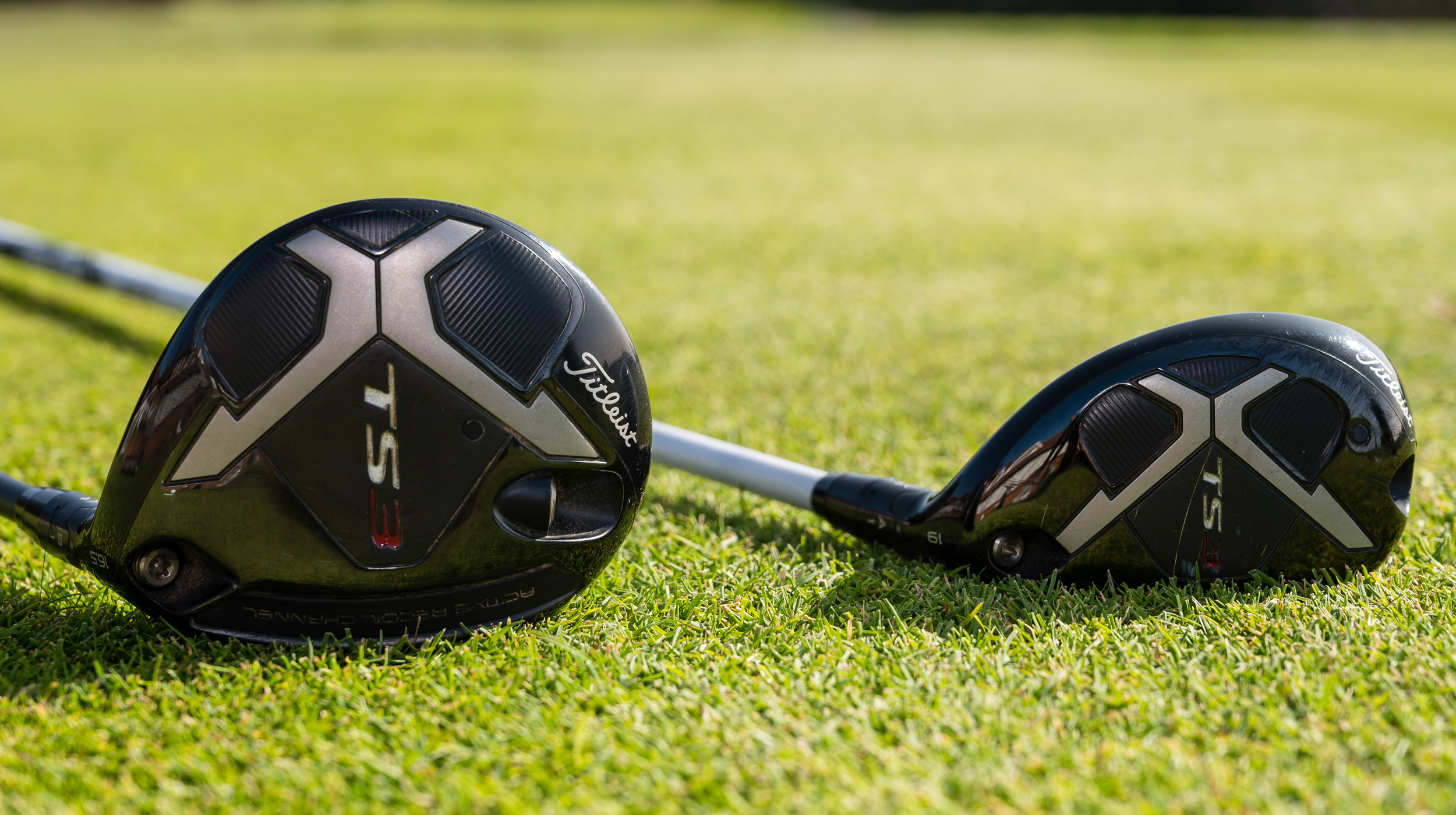3 Wood Vs 3 Hybrid: What’s The Difference?
We explain the key differences between these woods and the performance benefits you can expect from each club


3 Wood Vs 3 Hybrid: What’s The Difference?
There’s more choice than ever before when it comes to the top end of the golf bag, the power packed spots between your driver and your longest iron. You could opt for a fairway wood, one of many different hybrid models, a driving iron, utility iron or a classic long iron if you are a confident ball striker.
Here, we take two of the most popular choices – the 3 wood and the 3 hybrid - and put them head-to-head to help you decide which is best for your game. Also be sure to have a read of our guides on the best fairway woods and best hybrid golf clubs as well.
Length
Firstly, we start with the length of the clubs, with a 3 wood usually the second longest club in a golfer’s bag behind driver. Usually fitted with a 42 and 43 inch shaft as standard by the majority of manufacturers, the club is built for distance. It helps golfers hit longer shots from the fairway, out of shorter rough or as back-up to driver on tight holes.
A 3 hybrid is shorter in length, with a shaft measuring around 40 inches, and is meant as a playable replacement for a 3-iron. The differences in shaft length between a three wood and a 3 hybrid affect how far you’ll hit both clubs.
In terms of distance, a 3 wood will go further than a 3 hybrid and fly with a lower ball flight. An average distance gap between these two clubs would normally be 15 to 20 yards when testing with the best golf launch monitors.
Loft
A 3 hybrid is a direct replacement for a 3 iron, available in lofts between 20 and 22° while a 3 wood is generally lofted between 14 and 16°. The difference in loft means the 3 wood will fly lower and further than a 3 hybrid.
Subscribe to the Golf Monthly newsletter to stay up to date with all the latest tour news, equipment news, reviews, head-to-heads and buyer’s guides from our team of experienced experts.
What's more, a 3 wood will also roll out more in drier conditions, making it an obvious back-up club to driver when golfers begin to struggle off the tee or find themselves playing tight tree lined golf courses.
The higher lofted hybrid is going to launch higher, reach a greater peak height and land softer when it hits the fairway or green.

Design
Put these clubs side by side and you’ll notice obvious differences. A 3 wood has a larger clubhead, shallower in profile with a more rounded shape and bigger sole, while a 3 hybrid is more compact and iron-like, with a higher toe, slimmer sole and a deeper face.
These subtle differences mean that a 3 hybrid can be swung in the same way as a long iron, with a descending blow and a slightly steeper angle of attack than a fairway wood. The iron-like hybrid is useful for hitting out of a range of lies, including lush rough, cupped lies, fairway bunkers and off tighter fairways.
A 3 wood is designed with weighting and COG (centre of gravity) set lower and further back in the clubhead to promote launch. Think of them as ‘mini-drivers’ and you can appreciate that you need to swing differently to make great contact. The wider soleplate and larger head is designed to slide across the grass promoting a sweeping contact and a higher launch than with a 3 hybrid.
Another difference is that hybrid shafts are built around a 1/16th of an inch wider than fairway woods with a similar shaft thickness to irons. This makes them feel stouter and heavier than 3 wood shafts.
A final point to consider, some 3 hybrids have a flatter smaller clubface than the three wood, which is designed with a slight curvature across its wider face. The flatter hybrid face makes it easier to hit the ball squarely while fairway woods, like drivers, have a curved face to allow for the spin correcting ‘gear-effect’ that is a mainstay of modern wood design.
In general, their designs mean that a three wood will hit the ball further but be less accurate than a 3 hybrid. If you’re not comfortable using fairway woods, then a 3 hybrid is an accurate and versatile alternative to your three wood. They are not quite long enough to be used as a back-up or mini driver, but they are still excellent options for the hard-to-fill gaps between your driver and longer irons.
If this advice has peaked your interest in these clubs then be sure to take a look at our comprehensive guides on the most forgiving fairway woods, and most forgiving hybrids.
Matthew Moore fell in love with golf hitting an old 3-iron around his school playing field imagining rugby posts were flags and long jump pits as bunkers.
He earned golf scholarships to the University of St Andrews and Emory University, Atlanta, U.S.A and dreamed of playing professionally before training as a journalist.
He has worked at Golf Monthly and CNN Sports as well as covering golf news, features, products and travel as a freelance writer and TV presenter for newspapers, magazines and corporate clients. Matthew has interviewed Ryder Cup Captains, Major Champions and legends of the game and rates sharing a glass of rioja and a bowl of nuts with Miguel Angel Jimenez as his favourite moment. Matthew plays off 1, has won five club championships and aced the first hole of Augusta National’s Par-3 course in 2002.
